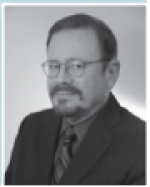NCRG Conference: The Evolving Definition Of Pathological Gambling And Related Disorders

What behaviors are symptoms of a mental disorder? What behaviors are not? And who decides?
In the United States, the most important decision-makers on this subject arguably are the group of scientists who are responsible for updating the preeminent text on the subject of mental disorders,The Diagnostic and Statistical Manual of Mental Disorders (DSM). The fifth edition of this text (DSM-5) was released earlier this year.
The NCRG was pleased to welcomeWilliam E. Narrow, M.D.,associate director of the division of research at the American Psychiatric Association and research director of theDSM-5 Task Force, Sunday at the14th annual NCRG Conference on Gambling and Addictionto speak about the changes made to gambling disorders in the new publication.
Dr. Narrow first discussed changes in the criteria for a gambling disorder in theDSM-5and explained some of the factors theDSM-5Task Force considered when making the changes. In theDSM-IV, individuals had to exhibit five out of 10 symptoms (such as a preoccupation with gambling) of the disorder in a given year to meet the criteria. Perhaps the most controversial change inDSM-5was the deletion of the “has committed illegal acts” criterion, and the subsequent change of cutoff score from five of 10 criteria to four of 9.
Dr. Narrow explained that the illegal acts criterion was found to be very different depending on the region of the country, focus of local law enforcement, and a number of other factors that affect how laws are enforced in the United States and worldwide. This variance in enforcement—and thus in symptom reporting—decreased the reliability and validity of the gambling measure, and several studies found that removing the illegal acts criterion and changing the cut-off score made the diagnoses significantly more accurate.
In addition to this gambling-specific information, Dr. Narrow also outlined some of the changes in the way theDSM-5Task Force defined mental disorders in general, with particular emphasis on two interrelated concepts. The two quotes from theDSM-5below highlight the concepts he discussed (emphasis added by Dr. Narrow on his slides).
‘A mental disorder is a syndrome characterized by clinically significantdisturbance in an individual’s cognition, emotion regulation, or behaviorthat reflects adysfunction in the psychological, biological, or developmental processes underlying mental functioning.’
‘The diagnosis of a mental disorder should have clinical utility: it should help clinicians to determine prognosis, treatment plans, and potential treatment outcomes for their patients. However,the diagnosis of a mental disorder is not equivalent to a need for treatment.’
According to Dr. Narrow,DSM-5mental health disorders must create disturbance and dysfunction in the lives of the individuals that live with them; however, simply having aDSM-5diagnosis does not imply a need for treatment.
One example of this might be caffeine addiction. An individual may experience uncomfortable withdrawal symptoms, but the dysfunction by itself does not imply that the individual needs to “quit” caffeine or seek mental health treatment for their dependence. Allowing for these potentially contradictory points gives theDSM-5more leeway to account for the varied and often complex relationships individuals develop with substances and behaviors.
Did you attend Dr. Narrow’s presentation? Tell us what you found most intriguing about the session.
NCRG staffConference on Gambling and AddictionDSM-5NCRG Conference on Gambling and Addiction

